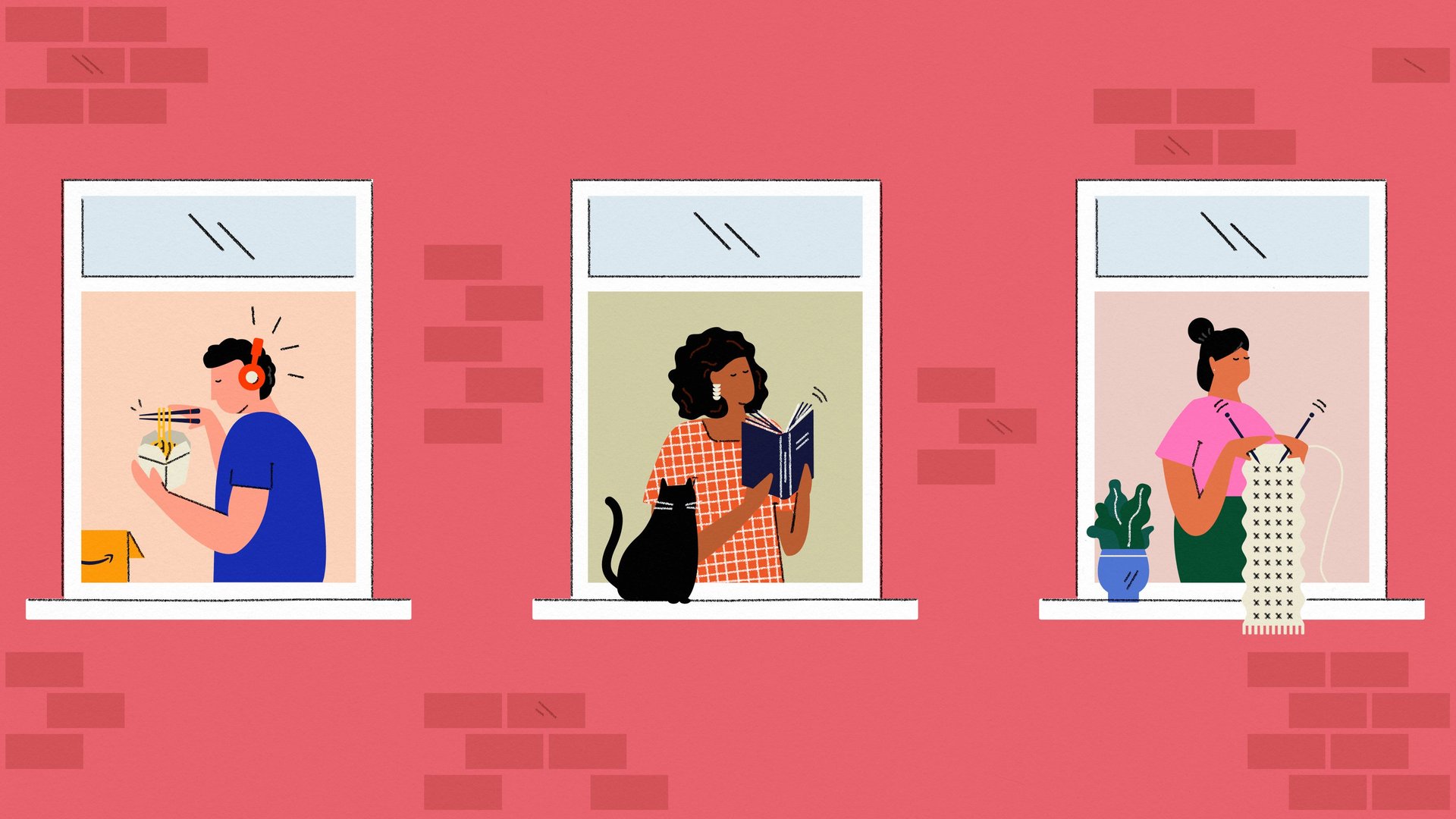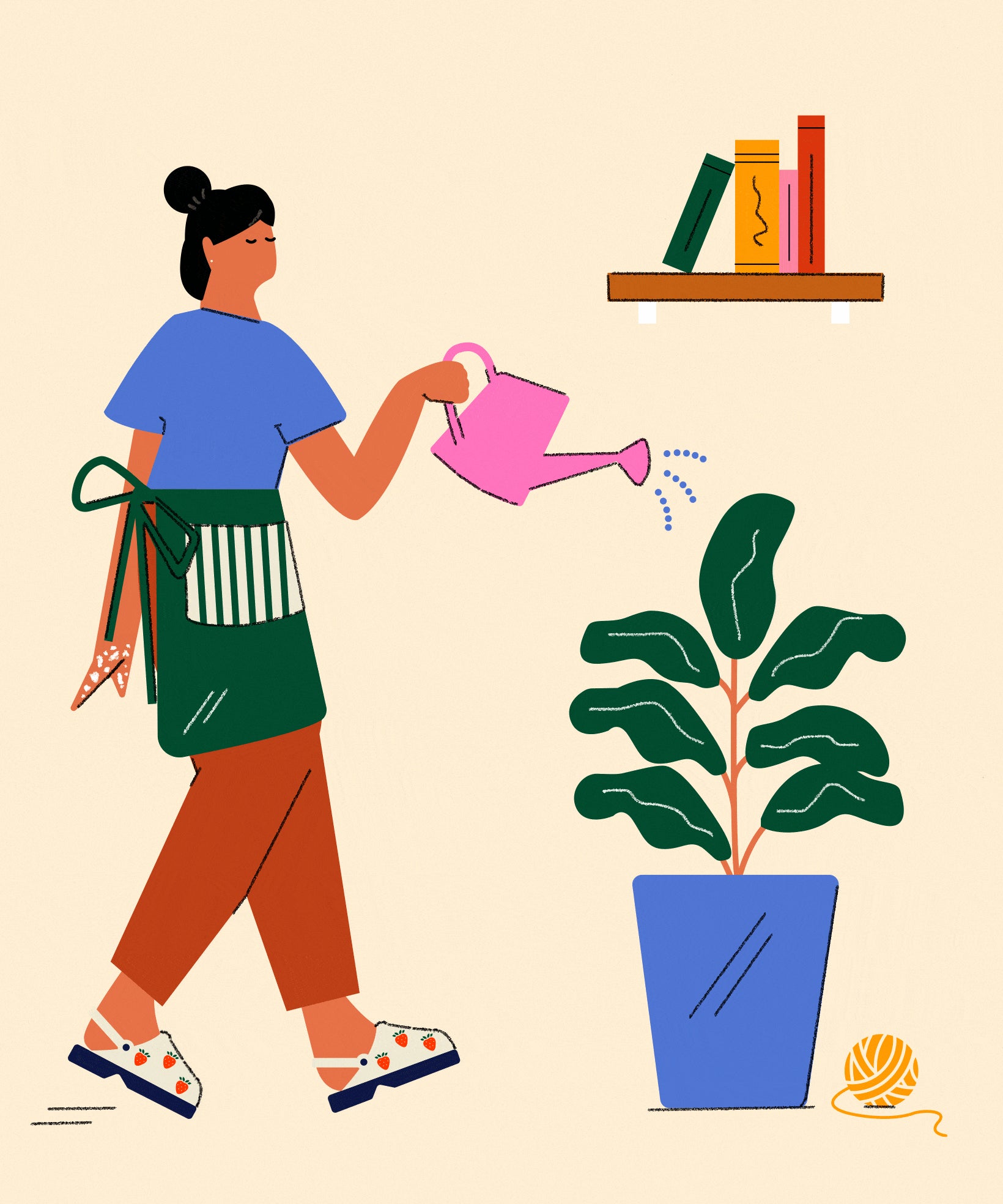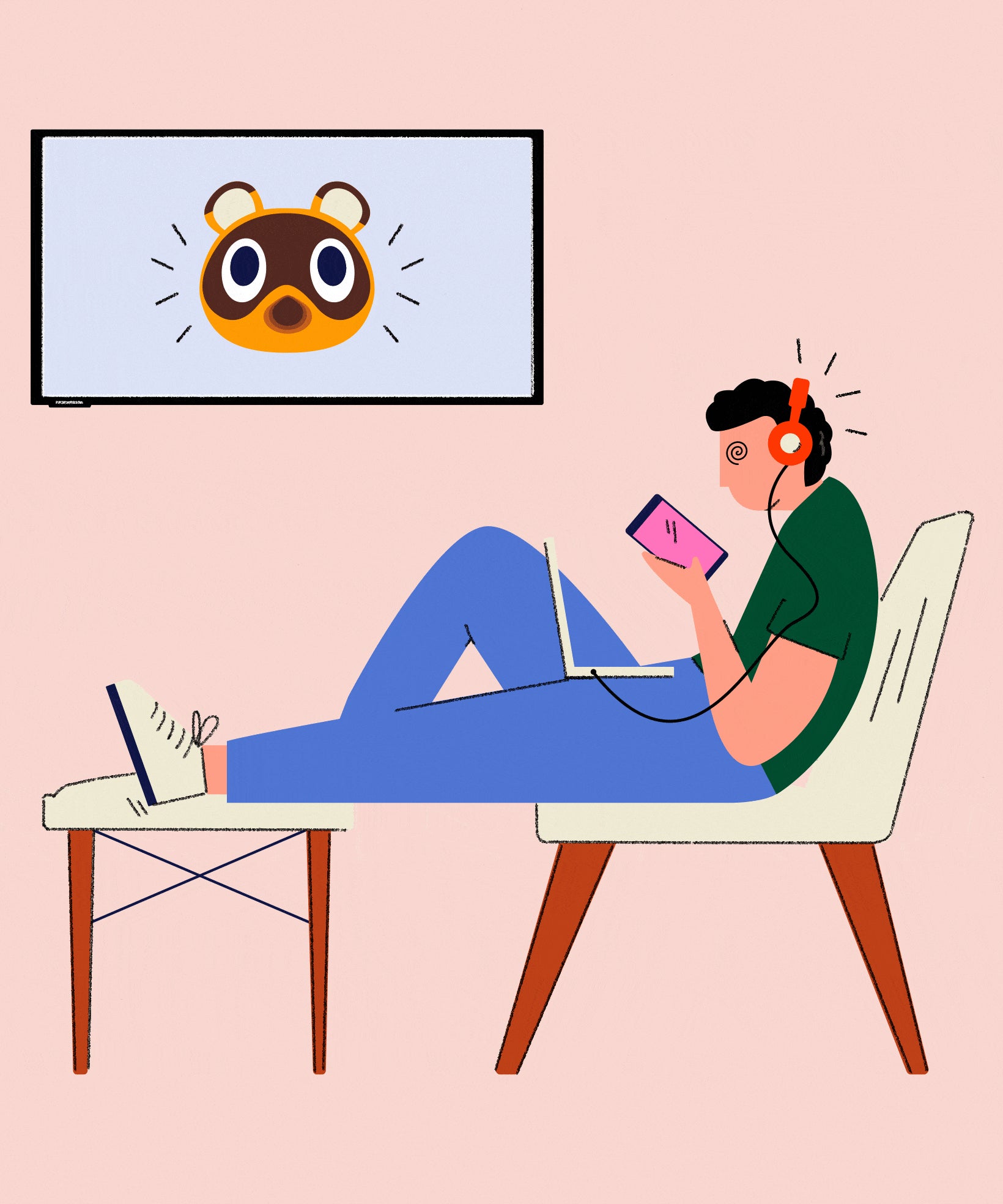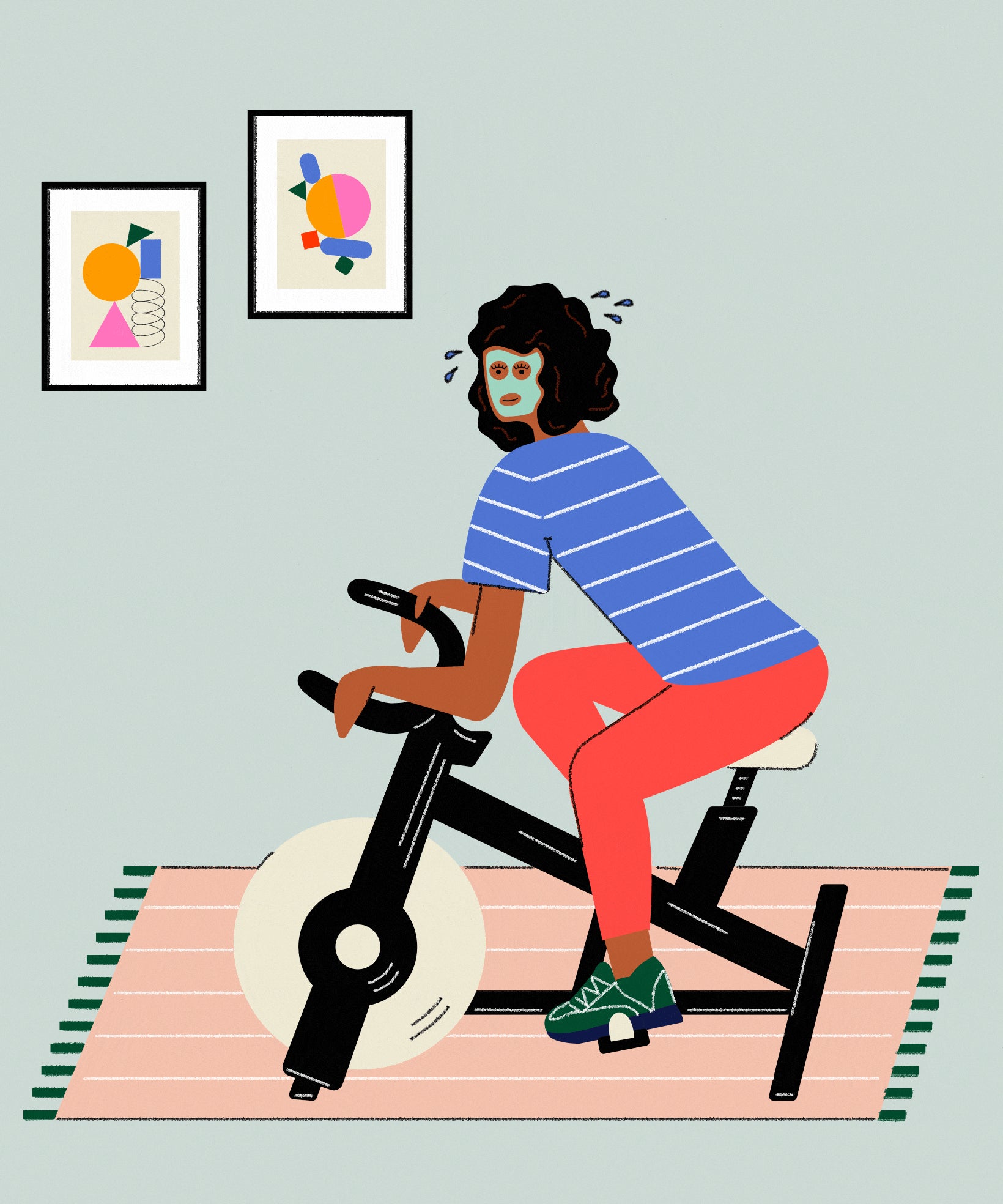The “hipsteader” and other new consumer species in the age of coronavirus
As coronavirus stay-at-home orders and self-mandated quarantines extend beyond the first quarter of 2020, some new consumer behaviors are beginning to emerge among those still thriving (and spending) despite the pandemic’s economic ravages. We first noticed it when otherwise fashionable, non-domestic acquaintances began sharing photos of sourdough starters and herb gardens, touting their new Crocs, and tie-dyeing their clothes with turmeric.


As coronavirus stay-at-home orders and self-mandated quarantines extend beyond the first quarter of 2020, some new consumer behaviors are beginning to emerge among those still thriving (and spending) despite the pandemic’s economic ravages. We first noticed it when otherwise fashionable, non-domestic acquaintances began sharing photos of sourdough starters and herb gardens, touting their new Crocs, and tie-dyeing their clothes with turmeric.
This, we realized, was a new species of consumer: the Hipsteader. These hip homesteaders use the energy—and money—they might otherwise have put into social outings in stylish outfits at Instagrammable locations into transforming their home-lives into what writer Heather Havrilesky described as “a group hallucination of some ‘Little House on the Prairie’ lifestyle.” (See also: the Silver Lake shaman.)
Other species that have begun to roam the consumer landscape in the era of coronavirus include the Screenhead, a creature that spends the vast majority of its time in hibernation and its money on e-commerce and streaming services and the Overachiever, a species of nervous multitasker that has adapted to the current climate by setting goals to improve their body, mind, and habitat.
There are overlaps between these types. A teenager who has mastered three dozen TikTok dances in between Zoom classes and group texts, for example, is exhibiting both Screenhead and Overachieving tendencies. And a person who has built their own hydroponic cannabis garden from scratch while listening to Duolingo to learn Portuguese might be considered an Overachieving Hipsteader. Herewith, an exploration of these species, and the sectors of the economic food chain their evolving behaviors support.
The Hipsteader (DIYus hippus domesticus)

Where to find them in the wild (pre-Covid):
At the local farmer’s market, craft fair, or high-end general store.
Where to find them in captivity, online:
Posting their latest creations (whether bread, “victory gardens,” or hand-sewn masks) on Instagram, debating the finer points of pickling and proofing in Reddit’s r/fermentation and r/sourdough communities.
What they’re doing in captivity:
What aren’t they doing? Sewing, knitting, crocheting, constructing, planting, cooking, composting, fermenting, canning, and baking “essentials” for a well-appointed, photogenic hipstead.
Identifying markers:
Sourdough starter or dirt under their fingernails; pocketed aprons to contain spades, kitchen shears, cell phones (for documentation), and one-hitters; strawberry-printed Crocs.
What companies and sectors they’re feeding:
Miracle-Gro and gardening suppliers
Seed companies are reporting “unprecedented levels of customer interest,” and Scotts Miracle-Gro, the centuries-old maker of home, lawn, and garden-care goods, reported that year-on-year sales were up 23% for the quarter ended March 28. A substantial boost came from Hawthorne Gardening, a subsidiary that owns dozens of brands supporting cannabis cultivation. Nothing says “hipsteader” like trading little hand-labeled jars of homegrown buds for sourdough starter or hand-sewn masks.
King Arthur’s Flour and baking suppliers
The sourdough bread-making boom has caused yeast and flour sales to, um, rise. Marketplace reports that sales at home baking supplier King Arthur Flour have tripled “even for whole wheat flour.” Red Star Yeast says “the current demand is simply unprecedented.”
Crocs and … Crocs
Of course it’s not only hipsteaders wearing Crocs in their newly planted gardens—they are popular with medical workers and other fans of practical, comfortable, washable footwear as well. But they’re doing remarkably well compared to the rest of the shoe market. Research firm NPD reported in April that while shoe sales overall are down, Crocs are driving growth (Quartz member exclusive ✦) in categories “relevant to life-at-home.” Model hipsteader and textile designer Heather Taylor is just one of many influencers now rocking strawberry-emblazoned Crocs, a trend The Strategist traced back to fashion editor Laurel Pantin.
The Screenhead (zombus remotus)

Where to find them in the wild (pre-Covid):
Movie theaters, sporting events, concerts, gaming at home, Netflix-ing and chilling.
Where to find them in captivity, online:
Everywhere: the Screenhead is Zooming, TikTok-ing, Tweeting, Grubhubbing, Twitching, Animal Crossing, and Amazon Priming their way through the pandemic.
What they’re doing in captivity:
Everything they used to do in pre-Pandemic life—whether shopping, socializing, exercising, eating, or, most of all, entertaining themselves—with the aid of their television, laptop, tablet, or phone. (Or, all of the above!) Juvenile Screenheads can also be spotted in captivity, likely on TikTok or Animal Crossing.
Identifying markers:
A pile of Amazon packages outside the front door; “text neck;” a human-shaped imprint in the couch.
What companies and sectors they’re feeding:
Netflix and other streaming services
Netflix added nearly 16 million subscribers in the first few months of 2020. As Adam Epstein recently reported, “This occurred as streaming usage across the industry skyrocketed. Verizon said streaming video on its US networks was up 41% in April. Americans watched about 27 billion minutes of streaming content on their TVs per day in April, up from 10 billion at the same time last year, according to Nielsen. Globally, daytime streaming usage was up 40% at the end of March, according to data collected by intelligence platform Conviva, which specializes in streaming media.”
Zoom and other online chat platforms
As of late March, Zoom fatigue, Zoom FOMO, and Zoom hangovers were all results of our work and social lives’ sudden transition to video calls. TikTok, Houseparty, Google Classroom, and Google Hangouts were all among the top free iOS apps. As of May 10, Zoom’s was the second-best performing US-listed stock of 2020, beat only by Moderna—a biotech firm developing a Covid-19 vaccine.
Amazon and other e-commerce and delivery giants
Another stock that’s doing okay? Amazon. In the first quarter, Amazon reported subscription sales, including Amazon Prime memberships, were $5.6 billion of the company’s $77.6 billion in revenues. As Karen Ho reported on Amazon’s conference call with investors, “CFO Brian Olsavsky noted the company’s Prime customers have been shopping more often and for more items. First-time viewers for the company’s Prime Video and digital offerings, such as music and video rentals, also nearly doubled for the month of March.”
The overachiever (proactivus nervosis)

Where to find them in the wild (pre-Covid):
At the gym, at the spa, at school, at Home Depot.
Where to find them in captivity, online:
On YouTube watching tutorials and TED Talks; working out on the Peloton app; making the most of their new MasterClass subscription.
What they’re doing in captivity:
Improving! Performing multi-step facials, highlighting their hair, building squirrel-proof bird-feeders, getting six-pack abs, teaching their kids to code.
Identifying markers:
Glowing skin, discernible muscle tone, non-visible roots, a new skill, and a house without visible dirty laundry or dishes.
What companies they’re feeding:
Direct-to-consumer and natural skincare companies
According to retail tracker NPD, which monitors the high-end products mainly sold in department and specialty stores, spending on skincare products like serums and masks online outpaced spending on cosmetics in the first quarter. The digital payments company Square also reported that US sellers saw an 186% increase in the sales of beauty “kits” in the four weeks ended on April 20, with sets for home facials, hair color, and pedicures leading the charge.
Khan Academy, MasterClass, and online learning
The non-profit Khan Academy reported a 250% surge due to young overachievers (ie. kids home from school) and requested that users donate with cryptocurrencies to support the service. MasterClass—which offers a $15 monthly subscription for home- and self-improving courses on everything from Texas-style BBQ to dramatic writing with celebrity teachers like Neil deGrasse Tyson, Gordon Ramsay, and Diane von Furstenberg—has also seen a post-Covid boost. And YouTube’s “with me” video series, which features tutorials and activities like “cook with me” and “work out with me,” has seen a 600% uptick in views since March 15.
Peloton and other home workout providers
Peloton—once the butt of many good jokes about bourgeois overachievers—is among the top-performing stocks of 2020, thanks in part to quarantined overachievers who are ordering bikes as fast as Peloton can make them. Other home fitness players that previously competed with gyms and boutique studios are reaping the benefits of their digital savvy. Erin Frankel, the cofounder of JetSweat, a web platform and iOS app that provides subscribers with on-demand video workouts from studios around the world, called the post-Covid demand “insane” (✦). The fitness stars of social media are also reaping the benefits. On YouTube, Yoga with Adriene videos were viewed some 29 million times in March of 2020—nearly triple the views of March of the previous year.